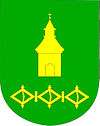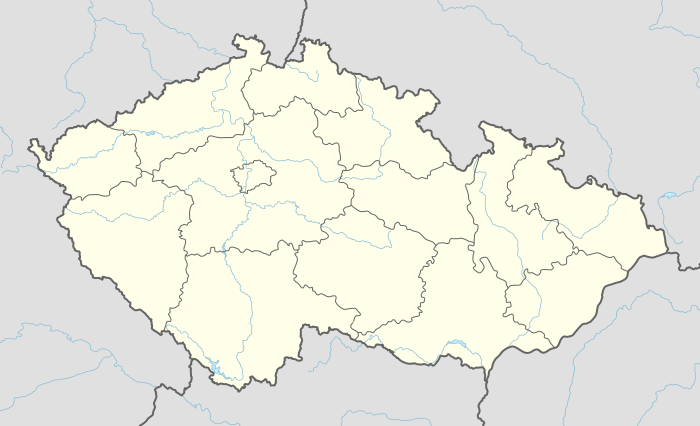Oselce
Oselce (German: Wos(s)eletz, Wosoletz or Wassenbach; in old Czech: Oselec) is a village and municipality in the Plzeň Region of the Czech Republic, nine kilometers south-east of Nepomuk. The municipality of Oselce consists of three villages: Oselce proper, Kotouň and Nová Ves. The total population of the municipality was 381 according to the 2001 census (225 in Oselce, 126 in Kotouň and 30 in Nová Ves).
Oselce | |
|---|---|
Village | |
Baroque church of the Assumption in Kotouň | |
 Flag  Coat of arms | |
 Oselce Location in the Czech Republic | |
| Coordinates: 49°26′15″N 13°40′08″E | |
| Country | Czech Republic |
| Region | Plzeň |
| District | Plzeň-South |
| Municipality | Oselce |
| First mention | 1394 |
| Government | |
| • Mayor | Václav Houlík |
| Area | |
| • Total | 14.78 km2 (5.71 sq mi) |
| Elevation | 585 m (1,919 ft) |
| Population (2006-08-26) | |
| • Total | 367 |
| • Density | 25/km2 (64/sq mi) |
| Time zone | UTC+1 (CET) |
| • Summer (DST) | UTC+2 (CEST) |
| Postal code | 335 46 and 335 01 |
| Website | www.oselce.cz |
History
Oselce has existed since at least 1388. In 1662, Jiří Kryštof Kokořovec is recorded as the holder of Woselecz. The first Oselce Castle was built in 1680. The Barock Palace, whose current form is due to a major remodel by Baumeister Giacomo Antonio de Maggi, was begun in 1705 and completed in 1737. Prince-Bishop, Prince Abbot Heinrich von Bibra’s nephew, Philipp Anton von Bibra (1751−1826), purchased it in 1808 from Antonin Zürchauer, who had himself purchased it a year earlier from František Dominik Janovský. By contract, it went from Philip Anton to his son-in-law, Clemens Wenzel von Boos zu Waldeck und Montfort, husband of their only surviving child, Johanna Carolina Thekla Freiin von Bibra (1774-1856). Their son, Franz Anton von Boos zu Waldeck, occupied the palace in 1832. They were also the parents of Count Ludwig Joseph von Boos-Waldeck, who promoted the settling of Texas by Germans.
In 1887, Victor Boos of Waldeck inherited the property. In the 1890s, the castle Wosseletz was a place of literature and music. Victor Boos von Waldeck acted as patron and was active as an artist himself as a translator and composer. Among his most famous works is the voicing of the poem Morgens steh’ ich auf und frage by Heinrich Heine. Guests at Castle Wosseletz during this period included Jaroslav Vrchlický, Josef Vaclav Sladek, Josef Svatopluk Machar, Václav Tallich, Oskar Nedbal, Josef Suk and Adolf Hofmeister.
In 1910, the land belonging to the castle had an area of 912 hectares. The castle remained in the hands of the Counts of Waldeck Boos after the Second World War, until it was expropriated by the new Communist regime in 1948.
The castle now serves as an agricultural vocational school. The chapel is open to the public. The interior of the castle was modernized and the facade was renovated in the years 1990-1991.
External links
| Wikimedia Commons has media related to Oselce. |